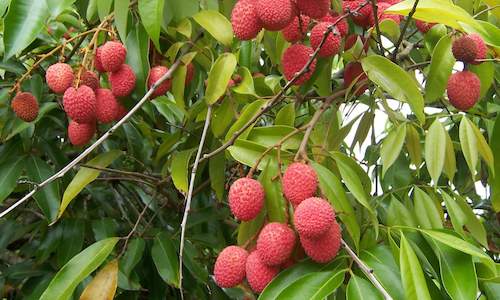In a defiant move against new trade barriers, South African litchi exporter Tomahawk has committed to sustaining its U.S. market programs, even as the expiration of the zero-tariff African Growth and Opportunity Act (AGOA) agreement introduces new tariffs. The company, based in the heart of South Africa’s subtropical farming region in Mpumalanga, is prioritising established market relationships over immediate cost implications.
Stuart Butcher, marketing director of Tomahawk, articulated the company’s stance: “We have spent a lot of time building the USA market… We feel it’s not right, after spending ten years building that market, to take a step backwards or pull out of the market. So we are going to carry on with a normal full programme, even with the tariff.” This commitment comes despite the “tricky situation” posed by the new tariffs, reflecting a determination to keep U.S. clients fully supplied with South African litchis. Tomahawk’s farms are primarily located in the Kaalrug Valley close to Malelane, which is recognised as the largest and earliest litchi supply area in South Africa.
A Strategic Investment, Not Just Sales
Tomahawk’s decision is particularly noteworthy given the significant effort invested in cultivating the American market. The company views its U.S. presence as more than just a direct sales channel; it’s a strategic anchor that positively influences other export destinations. Butcher explains that a withdrawal from the U.S. would have a “negative effect on a market like Europe,” where litchi sea freight is set to commence towards the end of November. This interconnectedness highlights how Tomahawk’s commitment to the U.S. market safeguards its global export strategy.
The litchi season itself is shaping up to be considerably better than last year’s poor yield. Butcher anticipates a “more normal litchi crop, and significantly better than last year’s poor crop, which was 15 to 20% of a normal crop!” This rebound is attributed to an “ideal winter, with nice consistent cold units but not too much extreme cold.” Small volumes of the predominant Mauritius cultivar (comprising 95% of their crop) are expected from 10 November, with U.S. air and seafreight packing kicking off between November 15 and 20.
A Look at Tomahawk’s Diverse Portfolio
Tomahawk manages 2,600 hectares, much of it in a crucial joint venture with the Matsamo Community Property Association, cultivating a diverse range of crops alongside litchis, such as citrus, bananas, mangoes, papayas, and sugar cane.
The mango crop, for instance, is showing significant promise. Following “a very good flowering and good fruit set,” Butcher predicts “a good mango crop out there, possibly a little bit earlier than normal.” However, the banana market is currently undersupplied, a consequence of a “harsh winter” marked by unusual extreme winds that led to considerable leaf damage.
In the citrus category, Tomahawk grows Navels for the local market and exports niche varieties like pink pomelo (Shaddock), which find strong markets in Europe, Russia, and the Middle East. Despite the complexities of international trade and varying crop conditions, Tomahawk’s resolute commitment from its Mpumalanga base stands as a testament to its long-term vision for the South African export industry.
